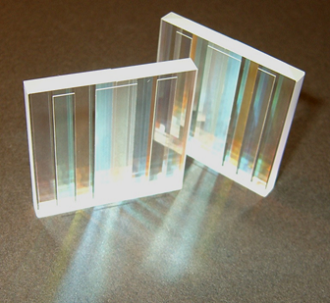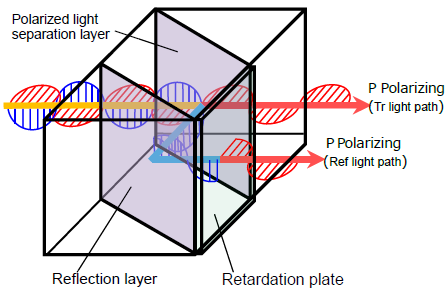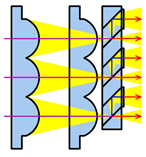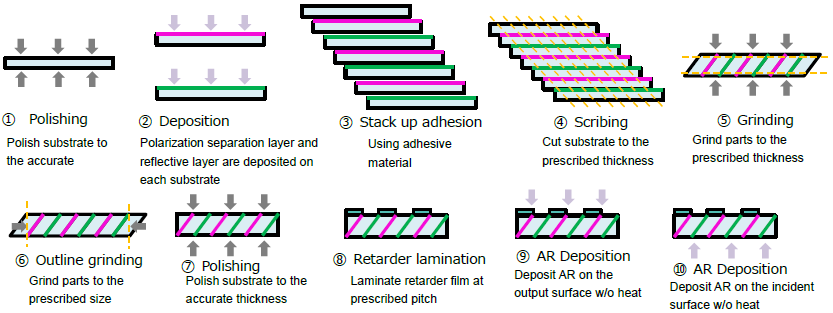PolarizationConvertingSystem

[Polarization conversion element]
Light is a type of electromagnetic wave that polarizes light with a specific direction of vibration. It's called. In particular, linearly polarized light oscillating in a plane including the optical axis is Depending on the direction of vibration, it is called P or S polarized light and exhibits different properties.
Light emitted from common light sources (incandescent lamps, mercury lamps, etc.) is unpolarized The P polarization component and the S polarization component are present in the same ratio. However, in optical equipment, only one of P-polarized light and S-polarized light is used. There is something to use, and if one polarization is selected by a polarizing plate etc. The light intensity will be halved.
The polarization conversion element is a P-polarized or An optical element that converts to S-polarized light.
Principle of PCS

The figure on the left is an example of converting non-polarized light to P-polarized light. The incident non-polarized light is transmitted by the P-polarized light through the polarization separation film, S-polarized light is reflected. The reflected S-polarized light is reflected by the reflective film. After the course is bent 90 ° again, the phase difference plate (1/2 wavelength plate) Is converted to P-polarized light. In this way, the light separated into the two optical paths becomes P-polarized light. Become.
Change the phase difference plate to the transmission optical path (incident optical axis) Therefore, it can be converted to S-polarized light.
Application example in liquid crystal projector optical system
The PCS installed in the liquid crystal projector has multiple units listed above.
An array of prisms is used in combination with a pair of fly-eye lenses.
Process of general Array PCS

